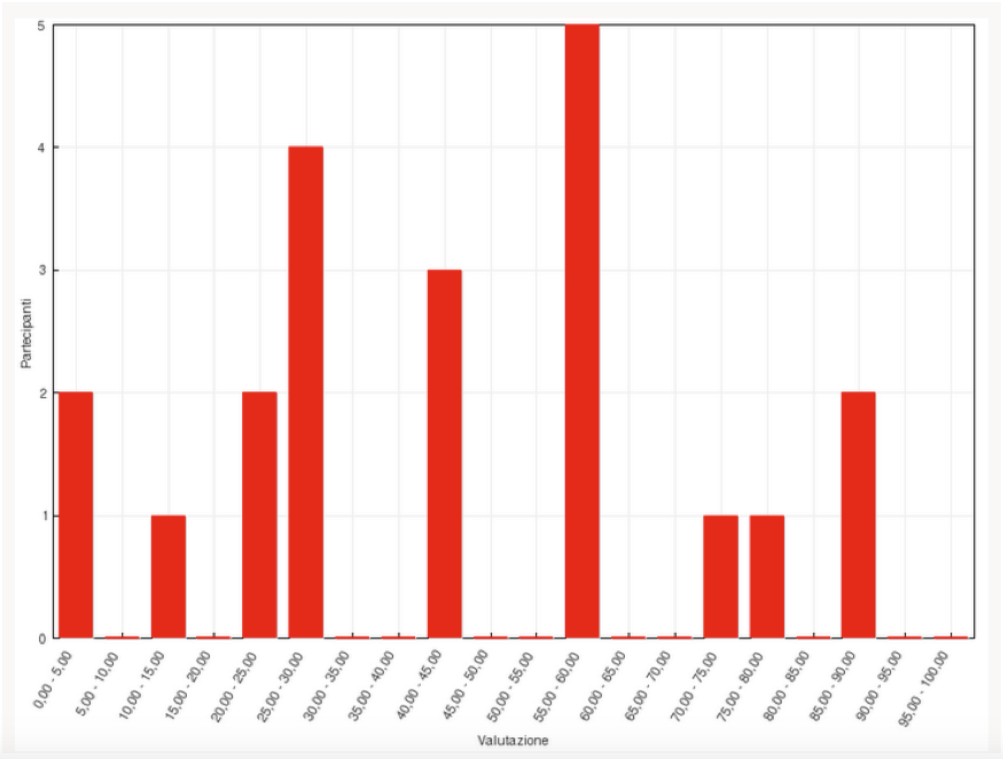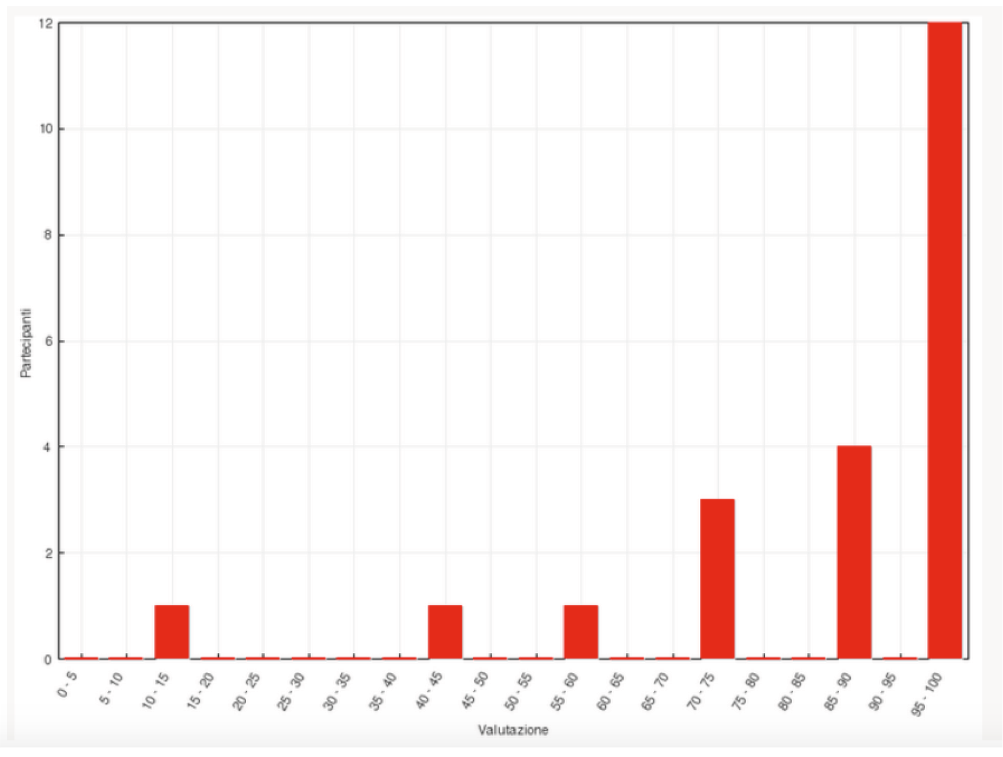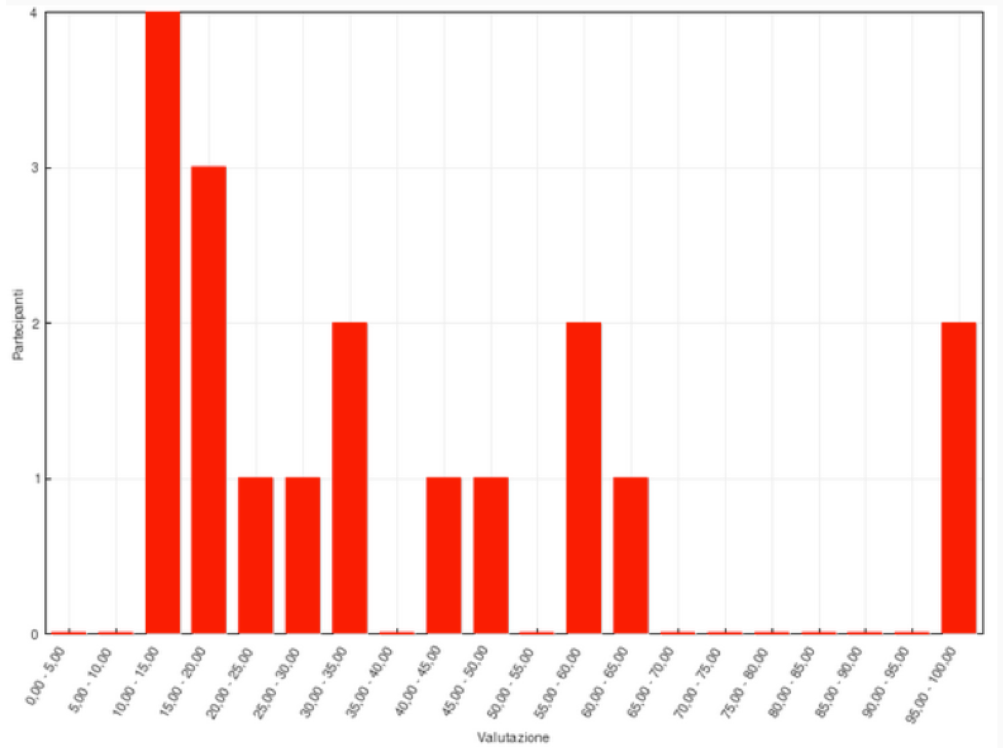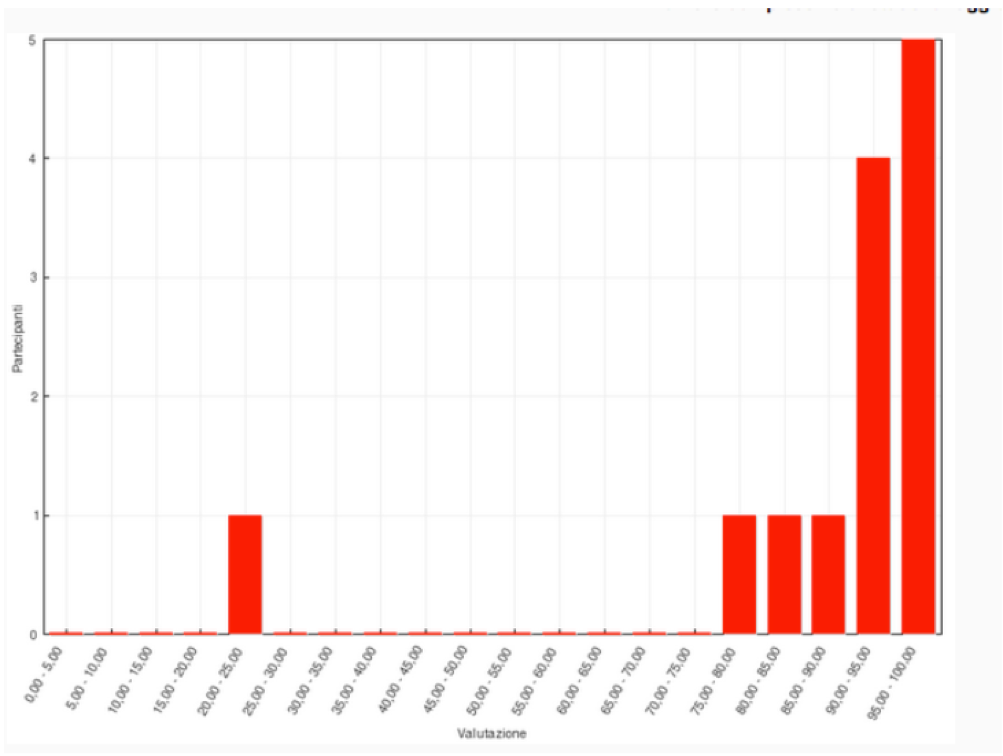
This paper focuses on the topic of formative assessment and its use by secondary school teachers to determine whether students have accomplished the preset learning goal at the end of each lesson.
This practice aims at contributing to disrupt the idea that education provided at school allegedly doesn’t really impact on the development of the students’ abilities and that whoever starts a course of instruction with some difficulties will usually complete it proportionally carrying along the very same difficulties.
Formative assessment has been spreading in school settings through new technologies in recent years. Such technologies are, in fact, revolutionizing teaching practices, thus allowing to get a deeper understanding of the learning patterns of the students through the tool herewith presented.
This practice enables students to appreciate how a teaching proposition is actually perfected around their specific characteristics, thus generating a learning-conducive classroom environment and spirit of cooperation, as each and every student takes on the leading role in things that happen.
Moreover, this raises another question, namely whether it is more appropriate to resort to a “rigid” teaching methodology or to try and adjust it to the characteristics of the class for the things that are being taught at any specific time.
This paper deals with the pilot-test that was implemented at the vocational training center “Oliver Twist at Cometa Formazione s.c.s” which resulted in some good practices relating to the use of formative assessment at school.
Download the PDF of this article
- Introduction
The schooling pathway, which in Italy starts at the age of 5-6 years and may be finished either at the age of 16, upon completion of mandatory education, or at 18-19 upon passing the exams to obtain a high school diploma, pursues the ultimate purpose to ensure social and cultural promotion of every person, that is to say to help students develop their talents and bridge any gaps resulting from the previous course of instruction (for example from junior high school for students that are about to start high school).
Literature, instead, widely indicates the existence of a solid correlation between the student’s initial attitude and his/her final results (Sandrone, 2008). Designing an instructional proposition which is also geared to those students that are scarcely prone to learning is a key point for the implementation of a school for everyone.
Formative assessment has been used for the purpose of this paper’s research as a perspective tool to design and plan an instructional practice that is increasingly more individualized on the single student or groups of students. Specifically, quizzes have been administered to students who would complete them on their personal tablet. This mode of action investigates into new technologies and into what is the most appropriate teaching methodology for the complexity of modern school classes.
- Formative assessment – Literature Review
The concept of formative evaluation was introduced by Scriven (1967) in his paper on the evaluation of teaching syllabuses. In Scriven’s opinion, the purpose of formative evaluation was to provide data that would enable adjustments to the new syllabuses as they were being planned and implemented (Allal et Lopez, 2005). The concept was then developed and further explored in some subsequent papers of the ’70s (Bloom, 1976; Bloom, Hasting and Madaus, 1971). In these papers the term evaluation is replaced with assessment, as the focus shifted from evaluating the school system to monitoring student learning in the classroom.
We can trace back the origin of the modern concept of formative assessment to the work completed by Black and Wiliam (1998) who provides this definition:
All those activities undertaken by teachers, and/or by their students, which provide information to be used as feedback to modify the teaching and learning activities in which they are engaged.
The authors identify four key elements:
- data on the current level of learning;
- data on the benchmark level;
- a methodology to compare levels;
- a methodology used to bridge the gap.
A final contribution to the definition of all the elements included in the modern concept of formative assessment is provided by the work conducted by Melmer, Burmaster and James (2008), who describe it as a process to give feedback and suggest modifications both for teachers and students with the aim to favor learning of the latter.
The relevance of the feedback timing, that is to say the moment when the teacher communicates the results of formative assessment, is underlined both by Butler (1988) and by Dweck (2000), in particular when feedback is provided without grades but only through comments, thus encouraging students to become effective learners , committed to improving their own learning strategy.
There are several types 1 of formative assessment, some providing qualitative results, some other more quantitative results. The type of formative assessment selected for the purpose of this research includes the use of questionnaires to be administered through the moodle platform of the school hosting the pilot test.
Literature has somehow achieved a certain degree of clarity in defining the types of teachers’ and students’ activities pursuing formative aims, that is helping teachers change their teaching methodology and adjust it to the actual learning process experienced by the students, even though the question whether this methodology really helps students achieve their educational goals is still open. The same Black and Wiliam (2003) state that they were overly positive in their views in the 1998 paper and that pilot tests run in schools whereby formative assessment was used, in fact, do not enable them to express a final opinion on this tool. This is also referred to and maintained by Dunn and Mulvenon (2009) who assert that there is no evidence of any direct correlation between the use of formative assessment in the completed pilot tests and any improvement in student results. The authors’ desire is for further pilot tests to be completed in order to rate the validity or not of this methodology; the same concern is shared and strengthened by Black (2015).
This paper’s contribution is set against this background: we find ourselves in the process of empirical research on formative assessment. Research types have been divided into three categories (Allal et Lopez, 2005):
- experimentation studies on the effects of the formative assessment;
- development of formative assessment’s tools and procedures;
- studies on the teachers and their practice through the use of formative assessment.
This work specifically falls within the scope of the first category, whereby suggestions are herewith provided for another potential research project that would belong with the second category.
- Pilot test
The pilot test representing the focus of this paper took place at the vocational training center “Oliver Twist – Cometa Formazione scs”, namely in the first year class (22 students) and second year class (18 students) 2 of the chapter “woodworking operator – real estate maintenance worker”. Two types of pilot test projects were conducted: with regards to the first year class, a quiz was administered through the Moodle platform, concerning the mathematics lesson that had just taken place.
Students completed the quiz consisting of multiple choice exercises at home, as homework; based on the analysis of the returned results, the teacher then planned the following lesson. I have named this first pilot test type as “Formative assessment for the purpose of daily lesson planning”.
A different type of pilot test took place in the second year class as the quiz was administered not at the end of a one-hour class but upon completion of an instructional unit, so as to evaluate the student learning level over a two-week period of time (overall 7 class hours); by so doing, we wanted to get an understanding of whether students were ready or not to take the test. As we see later on, the results have indeed shaken the instructional planning process. I have named this pilot test “Formative assessment for the purpose of individualizing the instructional practice”.
3a. Formative assessment for the purpose of daily lesson planning
In the first year class, three quizzes were administered at the end of three class hours, and the following lesson was planned around the analysis of the results returned by the students. In addition to creating a collection form with the answers provided by individual students, the e-learning platform also builds up an histogram featuring the distribution of the results. On the horizontal axis, students are divided based on the percentage of correct answers, specifically they are divided in intervals of 5 percentage points; the vertical axis shows the number of students included in a given interval (Pic. 1).

Picture 1 shows the first system-generated histogram following a lesson; there will be three of them. In order to analyze the results, we can identify four types of students, clustered by ratings:
- 0 – 45: students that failed to achieve learning goals;
- 45 – 60: students that got an understanding of the lesson topic but are not able to apply it correctly;
- 60 – 75: students that followed and understood the entire lesson and are able to perform some exercises;
- 75 – 100: students that accomplished all the lesson goals.
These categories will be used to comment on the charts resulting from the quizzes. Table 1 features results related to the first chart.
| Categoria | Numero di studenti |
| 0-45 | 12 |
| 45-60 | 5 |
| 60-75 | 1 |
| 75-100 | 3 |
| Tot. Studenti | 21 |
As we look at these results, you can see how most of the students had difficulties in accomplishing the goal of the lesson; in fact, 81% fall into the first two categories. This result suggested planning a participated correction for the following lesson, whereby students were called to the blackboard to correct the exercises they failed in the first place. This allowed me to address their questions, to bridge some of the evident gaps and to give appreciation to the three students who did achieve excellent results, thus asking them to take some of their classmates’ questions or to give explanations themselves.
Following an explanation on a different topic, another quiz was administered as formative assessment, which provided results shown in Pic. 2 and summarized in Table 2. As it can be easily noted, 86% of the students achieved a satisfactory level, 73% even an excellent one. In this case, the suggestion of a participated correction was not appropriate; still, an activity to drill down into the topic for those students that achieved the goals was proposed, whereas the three students showing some difficulties worked directly with the teacher, so that their individual difficulties could be properly addressed.

| Categoria | Numero di studenti |
| 0-45 | 2 |
| 45-60 | 1 |
| 60-75 | 3 |
| 75-100 | 16 |
| Tot. Studenti | 22 |
As a conclusion of the description of this first pilot test, the results of the last formative assessment administered to the first year students after an explanation are herewith shown. (Pic. 3 and Table 3).

| Categoria | Numero di studenti |
| 0-45 | 4 |
| 45-60 | 3 |
| 60-75 | 1 |
| 75-100 | 8 |
| Tot. Studenti | 16 |
As we analyze these results, it can be noted that the class is basically divided in three groups, easily identifiable in the histogram; although 50% of the students received a rating belonging to the fourth category, almost all of them are positioned on the lower limit of the category. Six students did not take the test. We may deduct that almost half the class successfully completed part of the exercises, whereas the other half is split between those who failed the goal and those who didn’t even try (for the purpose of our analysis, the latter can be seen as students that did not complete the test appropriately).
After going through the results obtained by the students, the choice was made to get them complete some exercises under the peer-tutoring principle, that is best-performing students were paired to students with difficulties, with the aim to help the latter complete the administered exercises.
This report about the pilot test shows how formative assessment can be resorted to by a teacher to plan his/her lesson after a one-hour explanation; it also shows how three very different distributions of results can be interpreted as well as three possible subsequent actions to support and favor student learning.
3b. Formative assessment for the purpose of individualization
This second pilot test took place in the second year class and involved 18 students. Unlike the previous pilot test, the quiz was administered after two weeks of explanation and exercises by the teacher and it was completed in classroom. The results are reported in the histogram of Pic. 4 and in Table 4.

| Categoria | Numero di studenti |
| 0-45 | 12 |
| 45-60 | 3 |
| 60-75 | 1 |
| 75-100 | 2 |
| Tot. Studenti | 18 |
As it can be easily noted, results were very poor, all the students except three received negative ratings and most of them received extremely negative ratings; however, 2 excellent students also stand out for completing the test impeccably.
This outcome indicates that the teaching methodology applied over the two weeks of explanation was not effective, therefore it was necessary to plan for some renewed explanation and exercises during the following two weeks; this, though, would not have rewarded the excellent work completed by the two students who impeccably completed the test. Failing to consider this aspect would have meant generating frustration and killing motivation for the students who excelled.
As these two completely different needs of the class were evaluated, two courses of action were planned, each lasting two weeks (7 class hours):
- the two excellent students studied and were assessed on advanced topics which would not have been addressed in the class, through some study forms delivered by the teacher;
- the remaining students were exposed to two weeks of exercises in small groups with frequent interaction with the teacher.
At the end of the two weeks, a new formative assessment was administered, featuring exercises similar to the previous one (Pic. 5 and Table 5).

| Categoria | Numero di studenti |
| 0-45 | 1 |
| 45-60 | 0 |
| 60-75 | 0 |
| 75-100 | 13 |
| Tot. Studenti | 14 |
First of all, we point out that 4 students did not complete the test, 2 students are the same two best performers and 2 students were not present when the quiz was administered. We can now notice how almost all students were now able to accomplish the preset educational goals, with the only exception of one who still shows some severe difficulties. For this student only, two tuition hours with the teacher were planned, however, despite this, no improvement was shown during the test. This data and this peculiar attitude of the student in a scenario where all the other classmates succeeded, led the teacher staff to suspect that the student might be affected with a specific undiagnosed learning disorder. The student’s family were called in and asked to get the appropriate diagnostic tests done. A form of dyscalculia was identified. This diagnosis allowed to plan an individualized instruction for this student, one that would help him develop his own compensatory tools; following the specific work done with him, the student became a pocket of excellence in the class.
The second pilot test highlights how formative assessment can be a tool to trigger questions about difficulties of the students, to enhance the excellences in a class and to timely cope with the request for help by the students, who often do not expressly pose such request.
- Conclusions and implications
This paper shows how formative assessment allows to gather quantitative information about the students’ learning level against the benchmark standard in a fast manner; also, it allows to evaluate the impact of an instructional strategy and, hence, to get a more detailed understanding of the teaching processes that work best in a class or don’t. This data collection, which revolves around the fundamental availability of a digital tool as it would be too complex for a teacher to correct all the student tests, allows to design, plan and enforce timely individualized measures which aim at sustaining the learning process of the students.
The results of the completed pilot tests, though admittedly partial and inconclusive, do outline a roadmap and certainly deliver some input for reflection:
- it is necessary to complete further pilot tests, also in the presence of control classes where this tool is not used;
- an observation protocol may be developed in order to:
- evaluate how students react to different teaching approaches;
- identify groups of students with similar learning patterns;
- plan an instructional proposition that is increasingly more geared to the characteristics of the class.
Accomplishing these goals, which is the ultimate purpose of the future pilot tests, may represent a fundamental milestone to design a teaching methodology which actually places the student at the heart of the learning process.
Bibliografia
Allal, L. and L. M. Lopez (2005), “Formative assessment of learning: a review of publications in French”, French Literature Review, pp. 241-264.
Black, P., & Wiliam, D. (1998), “Assessment and classroom learning”, Assessment in Education, 5(1), pp. 7-74.
Black, P., & Wiliam, D. (2003), “In praise of educational research: Formative assessment”, British Educational Research Journal, 29, 623-637.
Black, P. (2015), “Formative assessment – an optimistic but incomplete vision”, Assessment in Education: Principles, Policy & Practice.
Bloom, B.S. (1976), “Human Characteristics and School Learning”, McGraw-Hill, New York.
Bloom, B.S., J.T. Hasting and G.F. Madaus (1971), “Handbook on Formative and Summative Evaluation of Student Learning”, McGraw-Hill Book Co, New York.
Butler, R. (1988), “Enhancing and undermining intrinsic motivation: The effects of task-involving and ego-involving evaluation on interest and perfromance”, British Journal of Educational Psychology, 58, pp. 1-14.
Dunn, K. E. & S. W. Mulvenon (2009), “A critical review of research on formative assessment: the limited scientific evidence of the imopact of formative assessment in education”, Practical Assessment Research & Evaluation 14, 7, pp. 1-11.
Dweck, C.S. (2000), “Self-theories: Their role in motivation, personality and development”, Philadelphia, PA: Psychology Press.
Melmer, R., Burmaster, E., & James, T.K. (2008), “Attributes of effective formative assessment”, Washington, DC: Council of Chief State School Officers, Retrieved October 7, 2008.
Sandrone Boscarino, G. (2008), “Personalizzare l’educazione. Ritrosia e necessità di un cambiamento”, Rubettino Università, Bergamo, p. 152.
Scriven, M. (1967), “The Methodology of Evaluation”, AERA Monograph Series on Evaluation, 1, pp. 39-83.

